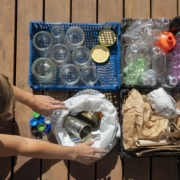Types of waste: examples, key points and regulations
If you want to understand types of waste ‘clearly and actionably,’ here are the essentials: official definitions, classifications (hazardous/non-hazardous, ECL, materials), everyday examples, and the waste management hierarchy to help you make better decisions.
What is waste? (according to regulations)
For the European Union, waste is any substance or object that the holder discards or intends or is required to discard. The Waste Framework Directive also establishes the concepts of prevention, reuse, recycling and recovery, and sets out the waste management hierarchy (prioritising prevention and recycling over disposal).
“First prevent, then reuse and recycle; landfill is the last resort.”
Large families: dangerous and non-dangerous
- Non-hazardous waste: cardboard, clean plastics, ferrous scrap metal, classified inert construction waste, urban bio-waste.
- Hazardous waste: waste listed as such or waste with hazardous characteristics (flammability, corrosiveness, reactivity or toxicity). Examples: solvents, paints, used oils, certain types of sludge or contaminated packaging.
Helpful tip: if in doubt, check the European waste code (EWC) and the material safety data sheet.
LER: the “registration number” for each type of waste
The European Waste List (EWL) assigns each type of waste a 6-digit code and organises it into chapters (origin/flow) and subchapters. This technical guide from MITECO explains how to classify waste correctly and when waste is considered hazardous due to its composition or by ‘mirroring’. miteco.gob.es
Quick example:
- 15 01 01 → paper and cardboard packaging (non-hazardous).
- 08 01 11* → paint and varnish waste containing organic solvents (hazardous).
(The asterisk indicates hazardous waste in the LER.) miteco.gob.es
Other classification approaches (material, flow, and sector)
- By material (statistics and targets): metal, plastic, paper/cardboard, glass, wood, bio-waste, WEEE, packaging, etc. Useful for recycling rates and reporting.
- By stream/sector: municipal, construction and demolition, hazardous, packaging, WEEE; the European Commission publishes implementation reports for each priority stream.
Clear examples by context
- Household/municipal: biowaste (food scraps), packaging (plastic/metal), paper/cardboard, glass, textiles, bulky items.
- Industry and commerce: pallets/wood, plastic packaging, scrap metal, non-hazardous sludge; and hazardous items such as solvents, oils, contaminated packaging.
- Construction and demolition: concrete, brick, ceramics (recyclable aggregates), metals, wood; and specific hazardous materials (paints, sealants). (Always sort according to EWC and local regulations).
Management hierarchy (your operational compass)
- Prevention (design, responsible purchasing, extending useful life).
- Preparation for reuse.
- Recycling (material).
- Recovery (including energy recovery) when not recyclable.
- Disposal (landfill), only as a last resort.
Quick facts about the EU (to provide context)
Eurostat’s official statistics enable comparisons to be made between generation and treatment by material and by country; this is key to setting targets and identifying trends (e.g. packaging).
How to put it into practice (company/local council)
- Correct classification (LER + hazardousness) and labelled containers.
- Traceability: contracts with authorised waste managers, records and weighings.
- Measurement: basic KPIs (tonnes per flow, % recycled/recovered, costs).
- Regular training and container audits.
- Operational integration: pre-treatment (shredding, screening) to improve recyclability.
Links we recommend
- Industrial shredders — for processing wood, plastics, or other waste streams.
- Wood recycling plants — from waste to resource.
Recommended sources
- European Commission — Implementation of the WFD (priority streams: municipal, C&D, hazardous, WEEE, packaging). Environment
- MITECO — Municipal management models (how collections are organised). miteco.gob.es
- Eurostat — Waste statistics (series and glossary). European Commission
FAQs
- What is the difference between hazardous and non-hazardous? Hazardousness is determined by listing or characteristics (flammability, corrosiveness, reactivity, toxicity). It requires specific labelling and treatment.
- How do I find the correct code (LER)? With the MITECO Technical Guide and the European Waste List (6-digit code per flow/material).
- What is the priority when managing waste? Follow the hierarchy: prevent, reuse, recycle and recover; dispose of only when there is no alternative.
Conclusion
Knowing the types of waste (and their EWC code) is not a formality: it is the basis for saving costs, avoiding penalties and improving circularity. If you sort properly, separate at source and measure your KPIs, the rest will follow: better contracts, more recycling and fewer problems.
Would you like us to review your cash flows and put together an improvement plan? → Let’s talk.






Leave a Reply
Want to join the discussion?Feel free to contribute!